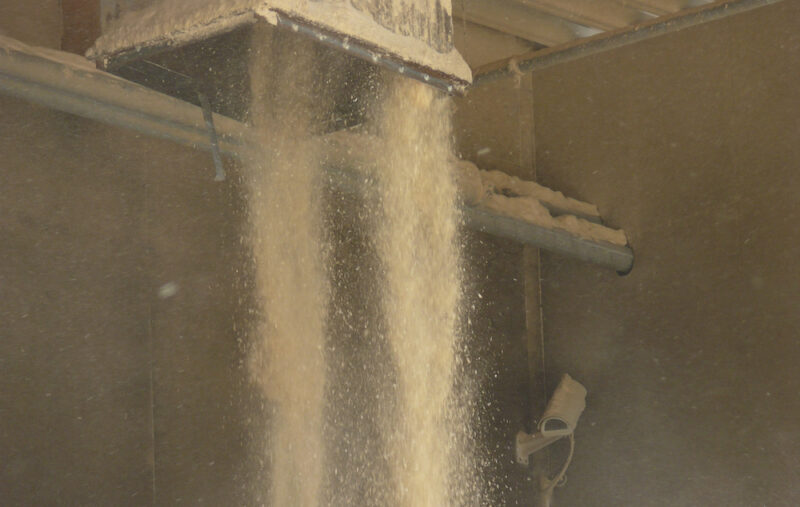Industry Update
Industry Update
The global industrial safety market is projected to reach $17.86 billion by 2030, at a CAGR of 11.1% from 2023 to 2030. The growth of this market is attributed to the need for reliable safety systems to ensure personnel and asset protection, stringent regulations for workplace safety, and the growth of the oil & gas sector driving the adoption of industrial safety systems. Furthermore, the increasing usage of industrial internet-of-Things is expected to offer potential growth opportunities.
Growing segment by industry include
- Automotive: With rapidly changing consumer attitudes towards greater connectivity, mobility, and autonomous vehicles, the increasing consumer demand for electric vehicles is pushing automotive players to increase manufacturing projects, thereby boosting demand for industrial safety systems.
- Chemicals & petrochemicals, oil & gas, and energy & power: Recognized as continuously developing industries where aging security issues and the need to expand and modernize infrastructure are essential.
In addition to Incident and Emergency Management, Asset Tracking and Management, Personal Protective Equipment Detection, Software is a growing segment which is attributed to the increasing deployment of software, including advanced technologies such as IoT, AI, and cloud-based services, that have impacted the overall growth of the industrial safety systems industry. With industrial safety systems, various software, such as chemical, healthcare, and administrative software, has been increasingly utilized in different industries' outer premises to resolve real-time issues.
Moreover, the increasing manufacturing activities, safety standards set by governments, and the rising need for workplace safety have driven the region's demand for industrial safety systems.
Thailand 2022 OSH Law
The recent revision to the 2022 Occupational Safety and Health (OSH) Law has alarmed many businesses as it significantly impacts numerous industries. This predominantly affects companies within the specified industries that are classified into three risk-based levels that employ more than 50 workers across one or multiple sites of operation. The recent revisions to the OSH Act also emphasize the need for companies to establish procedures and policies for ensuring operational security. Non-compliance with the law may result in substantial penalties.
The ‘Ministerial Regulation’ (Thailand 2022 OSH Law) is expected to enhance the safety management systems and promote Thai businesses to adapt the well-recognized standards, which may subsequently increase the competitiveness of Thai businesses in the global market. Effective since 10 June 2022, this ‘Ministerial Regulation’ is applicable to a wide range of industries. Many entrepreneurs, especially those whose business have not been certified by one of the mentioned well-recognized standards in relation to safety management systems, should prepare for the enforcement of this ‘Ministerial Regulation’ since it is subject to more stringent occupational safety and health regulation.
More information on the ‘Ministerial Regulation’ and target industries: https://www.mondaq.com/health--safety/1236968/new-mandatory-safety-management-systems-for-the-workplace-for-several-industries-thailand
The global predictive maintenance market size was valued at US$ 4.1Bn. in 2021 and the total predictive maintenance revenue is expected to grow at 29.5% from 2022 to 2029, reaching nearly US$ 32.43 Bn.
Predictive maintenance market dynamics: The growing use of advanced technologies to gather important insights is a major driver of market growth. Continuous advancements in big data, M2M connectivity, and cloud technology have opened up new avenues for investigating data obtained from industrial assets. Sensors, cameras, and other smart devices create a massive quantity of data for IoT devices. Detailed analysis, big data and data visualization approaches allow companies to obtain fresh perspectives.
AI-based IoT solutions are being adopted by businesses for predictive maintenance and improved customer service. Market providers must build predictive maintenance solutions that take into account two critical factors: maintenance and upgrades.
Predictive Maintenance Market Segment Analysis:
By Solution, the integrated solution segment is expected to dominate the market at the end of the forecast period. The increased need for customized solutions might be ascribed to the high demand for integrated systems. Additionally, as these solutions have gone mainstream, the need for application-specific services from numerous industrial sectors has grown substantially. Integrated solutions are custom-made, whilst isolated or standalone solutions are benchmarked or ready-made solutions provided by market participants. Standalone methods do not allow for customization, however, they are often used by small and medium-sized businesses because of their low cost The growing need for a single solution with many features is driving the popularity of integrated solutions over standalone alternatives.
By Service, the installation segment is expected to dominate the market at the end of the forecast period. The demand for cloud-based implementation of services from multiple sectors e.g. aerospace and military, automobile and transportation, and power and utilities is anticipated to grow. This is anticipated to contribute much more to segment growth. Because heavy machinery and equipment require frequent and timely maintenance to work properly, service and maintenance solutions are gaining popularity. Once these solutions are deployed, support and repair services are critical throughout the solution's lifespan. These services assist firms in increasing overall efficiency and income creation. The greater rate of implementation of preventative and reactive maintenance solutions, as well as the anticipated continuance of the trend, are also driving the segment growth.
By End-User, the manufacturing segment is expected to grow at a CAGR of 4.9% during the forecast period. The increased requirement for maintenance of production machinery e.g. robotic systems, apparatus, forklifts, compressors, etc. to reduce total downtime is increasing the manufacturing segment's use of preventive maintenance services and solutions. Additionally, increased production automation, along with Industry 4.0, is estimated to drive the demand for these technologies to secure high-quality and expensive apparatus from damage.
The energy and utility sectors are also significant contributor to the growing market. The segment's growth can be ascribed to the growing demand to improve system reliability by identifying possible difficulties before they arise. Additionally, the growing necessity to estimate the possibility of a breakdown of aging components in power and utility infrastructure is driving the market growth. Moreover, the prevalence of energy consumption analytics apps is helping to drive the energy and utility segment to the forefront of the industry.
During the forecast period, the Asia Pacific market is expected to grow at a CAGR of 5.8%. The increased growth of the market in the continent is mostly due to substantial expenditures offered by the state and private sectors to improve maintenance solutions. As a result, the need for preventative or predictive maintenance solutions installed for optimizing a facility's maintenance process is increasing. Furthermore, the region's increased supply of inexpensive labor has resulted in the construction of a large number of industrial facilities. Moreover, increased concerns about lowering total downtime and operating costs in manufacturing facilities are compelling facility owners to use these approaches.
Reference: https://www.maximizemarketresearch.com/market-report/global-predictive-maintenance-market/96231/










